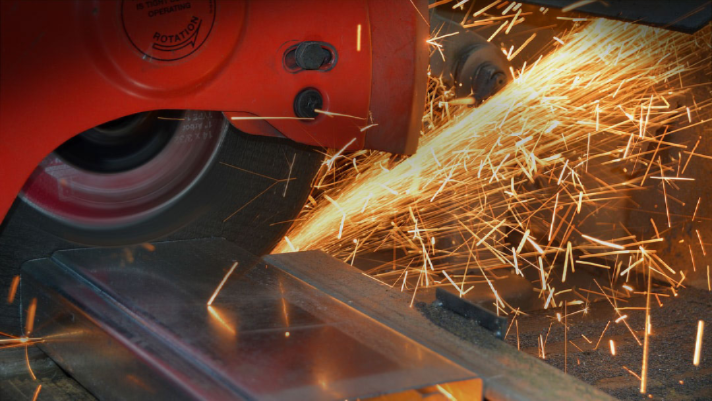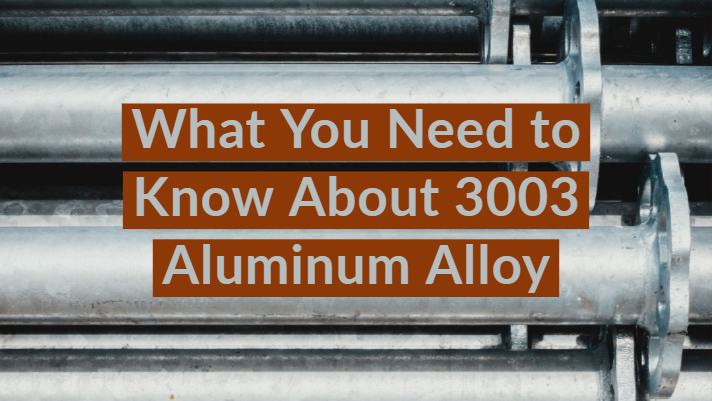Everything You Need to Know About 302 Stainless Metal Grades
Leave a Comment The thin metal strips industry has significantly grown in the last five years. It is attracting huge attention from building and contractors who are looking for alternative construction materials. Brass and copper have specifically experienced significant growth in the last few years owing to their lightweight property. The same can be said for thin aluminum strips.
The thin metal strips industry has significantly grown in the last five years. It is attracting huge attention from building and contractors who are looking for alternative construction materials. Brass and copper have specifically experienced significant growth in the last few years owing to their lightweight property. The same can be said for thin aluminum strips.
The United States Bureau of Labor Statistics highlights that the metal fabrication industry is expected to grow by approximately 9% between 2016 and 2026. This is a clear indication that the metal sector is continuously growing. Combining the use of metal in the automotive sector and the real estate will bring a new dimension in the sector that was in decline several years ago.
Thin Metal Grades (302 Stainless)
Before using metals for construction purposes, it is important to understand that there are different types of metal grades. Some of the most common metal grades to consider include 302 stainless, 17-7 stainless, and 304 stainless. However, this article discusses the properties of 302 stainless and why metal experts should consider this metal grade for construction purposes.
Extremely Tough
302 stainless is an example of combined metals that are used to perform specific construction activities in the industry. Besides the combination of several metals, other properties make this grade one of the best in the industry. Elements such as carbon, titanium, and iron produce one of the toughest alloys that can be used in any construction work. The toughness of this metal grade explains why it is used in the manufacture of some of the most sensitive parts in the aeronautical industry.
Ductility Property
In the construction industry, many pieces of construction materials are required to achieve a specific objective. However, 302 stainless is solving the entire problem by bringing its ductility property in the industry. Unlike other construction materials that cannot be stretched without becoming brittle or demonstrating significant weaknesses, 302 stainless can be stretched to the point of forming a thin wire without breaking. It is one of the few metal grades that can be pulled and stretched to meet the needs of the constructor.
Corrosion Resistant
Most of the metals out there in the industry corrode when exposed to various elements in the atmosphere. This is a weakness because such metals cannot be used in the construction industry. They will weaken with time and any structure constructed using such metals will ultimately collapse. However, just like stainless steel, 302 stainless is corrosion resistant. Therefore, it cannot corrode when exposed to various elements in the atmosphere. This property makes it one of the best metals in the aeronautical sector.
Fabrication and Formability
Fabrication and formability are important properties in metals. Both properties are essential in the construction industry, where raw materials are converted into finished products that can be used in construction activities. 302 stainless is one of the few thin metal sheets that demonstrate both fabrication and formability properties. These properties make it one of the most reliable metal grades in the construction sector. The fact that it can be curved into various shapes and angles without breaking is a welcome bonus.
Rust Resistant
Rust is a major issue when it comes to construction metals. It makes them weak and unsuitable for sensitive structures, especially those used in medical and aeronautical industries. 302 stainless steel is an alloy of nickel and iron, which means that all the properties of iron, including rust, have been watered down. Just like 6061 aluminum, 302 stainless does not rust, which makes it one of the most suitable metal grades in the construction industry.
Are you looking for metal sales near me? Thin Metal Sales is a leading business that provides all the metal needs to customers in the West Coast region. With specialized and custom customer services, you can easily get 302 stainless sheets within the shortest time. With experienced technicians and advanced equipment, we can provide quality metal sheets with consistent customer satisfaction.
What You Need to Know About 3003 Aluminum Alloy
Leave a Comment When it comes to elements, aluminum is available in large quantities on the crust of the earth. As a metal, it is a useful material for many industries. There exist various kinds of metallic aluminum, which are called aluminum alloys, which differ in characteristics.
When it comes to elements, aluminum is available in large quantities on the crust of the earth. As a metal, it is a useful material for many industries. There exist various kinds of metallic aluminum, which are called aluminum alloys, which differ in characteristics.
Some of them include 3000 aluminum, alloy 2011, 6061 aluminum, and alloy 1100. To understand what are combined metals, you must know the procedure involved in alloying. First, there must be metallic components such as copper, magnesium, and steel.
According to recent studies, steel constitutes approximately $30 billion of revenue in the United States. Next, these elements of metal are combined with a non-noble metal, which in this instance, is aluminum. This article explores more on the properties and uses of 3003 aluminum.
Physical Characteristics of 3003 Aluminum
Combined metals such as aluminum alloys differ in formability, machining, corrosion resistance, strength, and heat tolerance. Types and proportion of alloying components determine the difference. The 3003 aluminum alloy is commonly used, and for commercial purposes, manganese is added to boost its strength.
It is superior to alloy 1100 as it is 20% higher in strength. On the strength metrics, the alloy 3003 ranks on medium and is made hard by cold work. Alloys which are of the 3xxx grade are hardened without any heat treatment.
The work-hardening procedure involves mechanical distortion, such as hammering and rolling. Depending on the method applied during hardening, it can have more significant designations, such as the H18-hardened 3003 aluminum (3003-H18). When it comes to corrosion resistance, weldability, and formability, it is rated excellent.
Fabrication Process
Different metals react to fabrication methods in distinctive ways. All alloys, including stainless steel, aluminum alloys, and copper brass, have different manufacturing processes. Most industries prefer to use aluminum as a raw material because of its metal fabrication process.
Whether for use in automobiles, spacecraft, or solar panels, some level of fabrication is essential for the aluminum components to meet their standard. With new technology, the process is less complicated. Alloys made from aluminum are typically supplied as unfinished products like the coil, plate, sheet, tube, and wire.
The various forms are then manufactured into finished goods through many processes. Cutting is usually achieved through shearing, chiseling, or sawing.
The Bending Property of 3003 Aluminum Alloy
Numerous techniques can be used to bend aluminum, including three-roll bending, three-point bending, stretch forming, wrap, and mandrel. The appropriate method depends on the form of an alloy. Three roll bending involves a main flexible roller that is progressively caved in the workpiece until a suitable radius is attained.
Just like three-roll bending, the three-point bender slowly or instantly applies an object through. The two methods of bending are implemented in inactive regions. Regarding bending, due to its formability, aluminum is the primary material.
3003 aluminum alloy bends easily, which allows for a large radius and high elasticity. The least acceptable bend radius is subject to factors like temper, mandrel functions, alloy, and cross-sectional measurements. For this reason, it is difficult to give a general rule regarding the bend radii.
Typical Applications
Since aluminum is used in several industries, including aerospace, it is referred to as a general use alloy. In the building sector, the 3003-aluminum alloy is used in roofs, folded sheets, sidings, and acoustic ceilings. Storage containers, fabricated metal products, and pipes are utilized in the food and chemical industry.
One of the significant applications of 3003 aluminum alloy is in the cooling units of heat engines including radiators since it is light and thermal conducive. For the heating and cooling system, the alloy is used in air conditioning evaporators, car radiators, and heat exchangers. Other popular applications include cooking utensils, ice cube trays, refrigerator panels, fuel tanks, and pressure vessels.
The aluminum grade on this alloy makes it ideal for various uses. You can get a wide range of applications of the 3003-aluminum alloy due to its response to certain factors like bending, heat treatment, and hardening.

